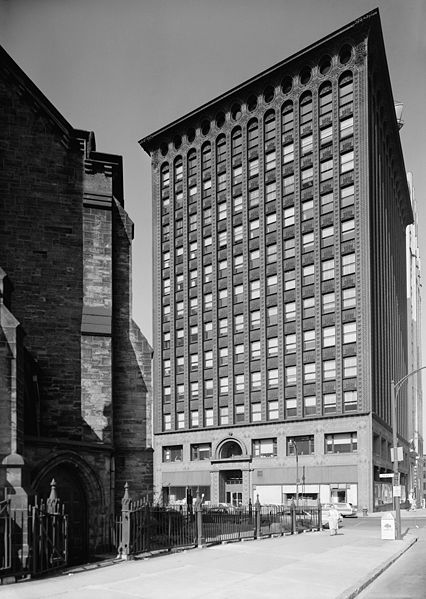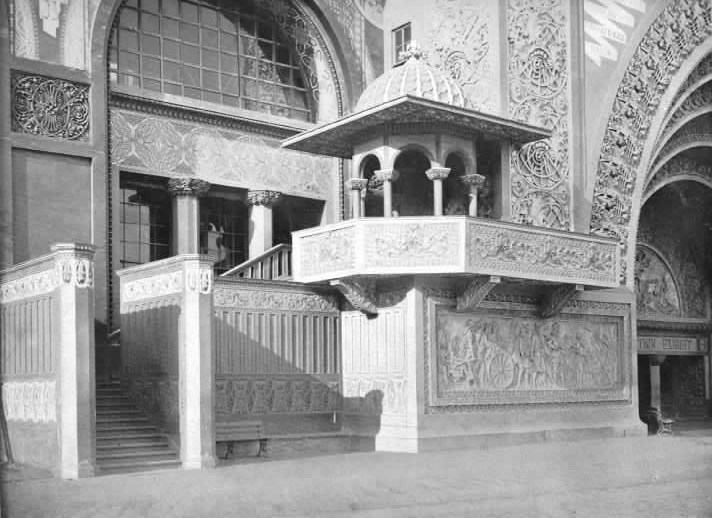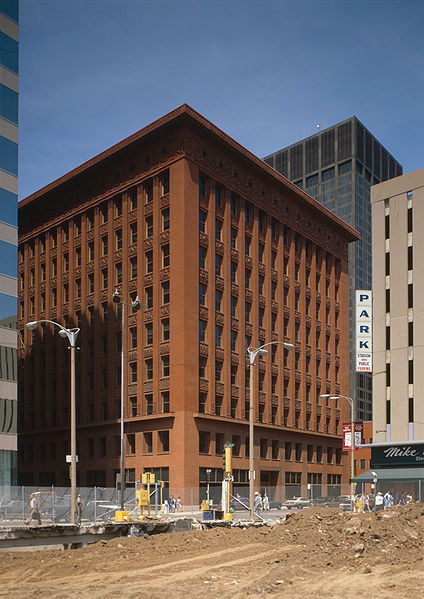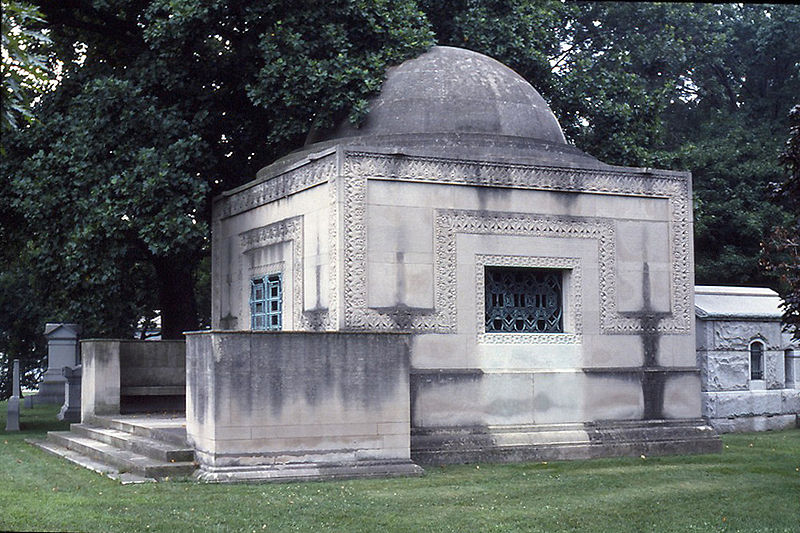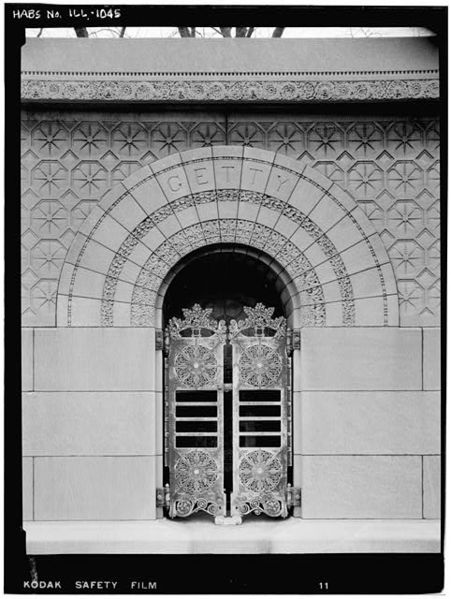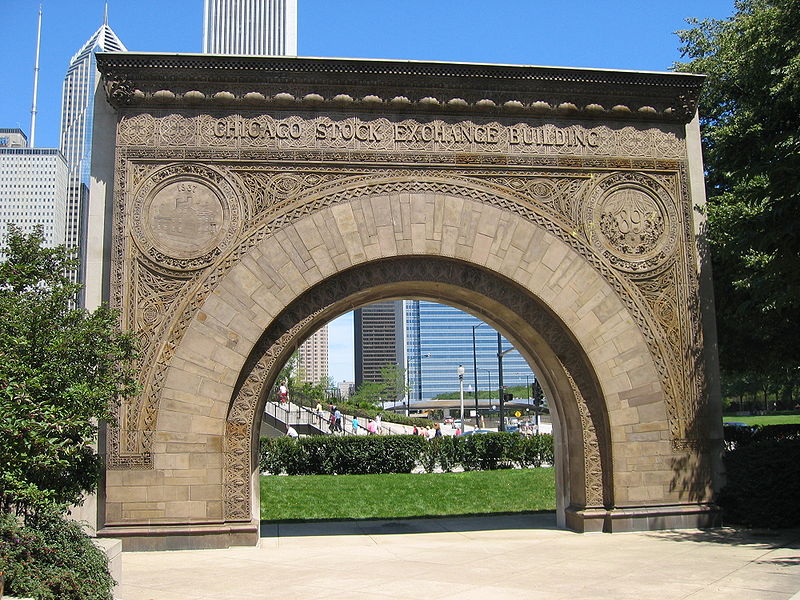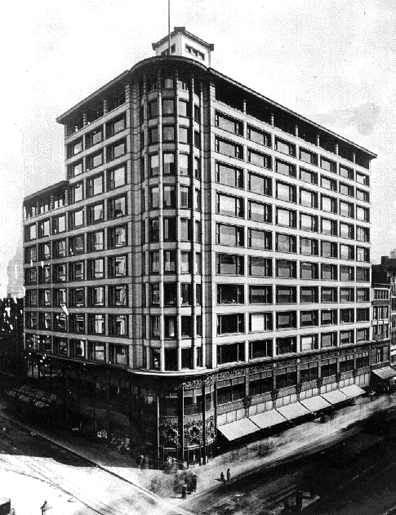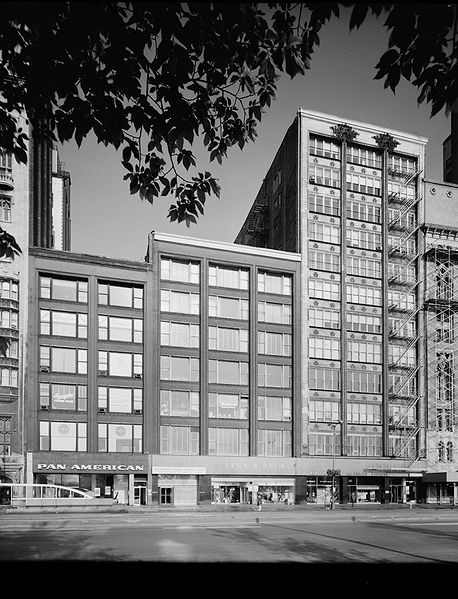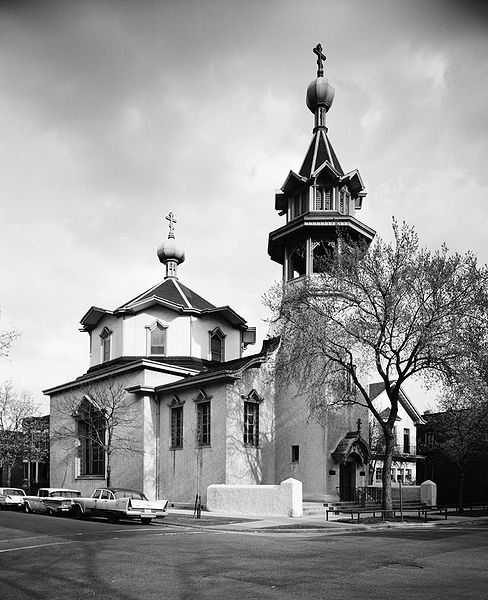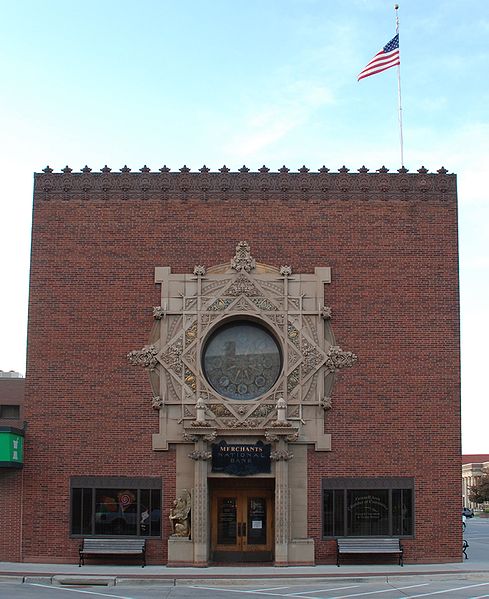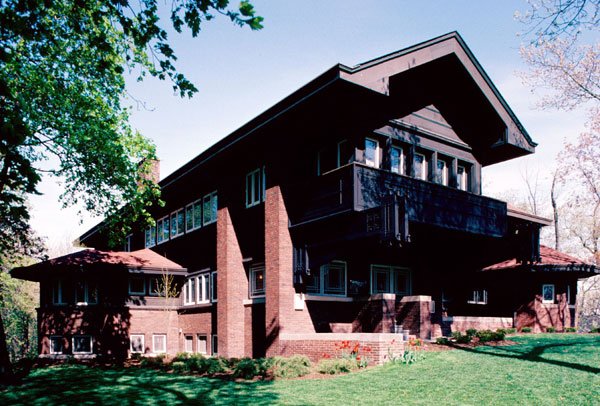<Back to Index>
- Mathematician Lev Semenovich Pontryagin, 1908
- Architect Louis Henri Sullivan, 1856
- 8th President of Finland Urho Kaleva Kekkonen, 1900
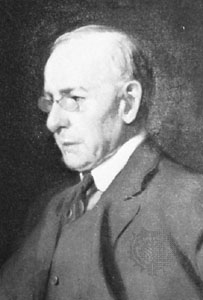
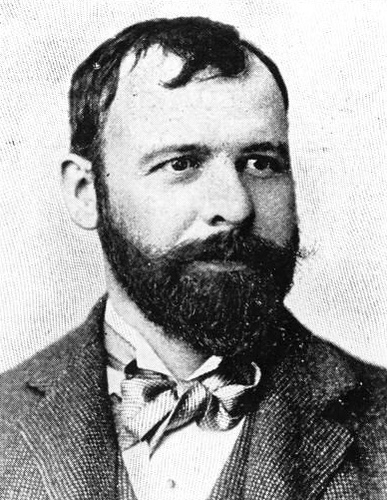
Louis Henri Sullivan (September 3, 1856 – April 14, 1924) was an American architect, and has been called the "father of modernism." He is considered by many as the creator of the modern skyscraper, was an influential architect and critic of the Chicago School, was a mentor to Frank Lloyd Wright, and an inspiration to the Chicago group of architects who have come to be known as the Prairie School.
Louis Sullivan was born to an Irish-born father and a Swiss-born mother, both of whom had emigrated to the United States in the late 1840s. He grew up living with his grandmother in South Reading (now Wakefield), Massachusetts. Louis spent most of his childhood learning about nature while on his grandparent’s farm. In the later years of his primary education, his experiences varied quite a bit. He would spend a lot of time by himself wandering around Boston. He explored every street looking at the surrounding buildings. This was around the time when he developed his fascination with buildings and he decided he would one day become a structural engineer/architect. While attending high school Sullivan met Moses Woolson, whose teachings made a lasting impression on him, and nurtured him until his death. After graduating from high school, Sullivan studied architecture briefly at the Massachusetts Institute of Technology. Learning that he could both graduate from high school a year early and pass up the first two years at the Massachusetts Institute of Technology by passing a series of examinations, Sullivan entered MIT at the age of sixteen. After one year of study, he moved to Philadelphia and talked himself into a job with architect Frank Furness.
The Depression of 1873 dried up much of Furness’s work, and he was forced to let Sullivan go. At that point Sullivan moved on to Chicago in 1873 to take part in the building boom following the Great Chicago Fire of 1871. He worked for William LeBaron Jenney, the architect often credited with erecting the first steel-frame building. After less than a year with Jenney, Sullivan moved to Paris and studied at the École des Beaux-Arts for a year. Renaissance art inspired Sullivan’s mind, and he was influenced to direct his architecture to emulating Michelangelo's spirit of creation rather than replicating the styles of earlier periods. He returned to Chicago and began work for the firm of Joseph S. Johnston & John Edelman as a draftsman. Johnston & Edleman were commissioned for interior design of the Moody Tabernacle, which was completed by Sullivan. In 1879 Dankmar Adler hired Sullivan; a year later, he became a partner in the firm. This marked the beginning of Sullivan's most productive years. And it was at this firm that Sullivan would deeply influence a young designer named Frank Lloyd Wright, who came to embrace Sullivan's designs and principles as the inspiration for his own work.
Adler
and Sullivan initially achieved fame as theater architects. While most
of their theaters were in Chicago, their fame won commissions as far
west as Pueblo, Colorado, and Seattle, Washington (unbuilt). The culminating project of this phase of the firm's history was the 1889 Auditorium Building in
Chicago, an extraordinary mixed-use building which included not only a
3000 seat theater, but also a hotel and office building. Adler and
Sullivan reserved the top floor of the tower for their own office.
After 1889 the firm became known for their office buildings,
particularly the 1891 Wainwright Building in St. Louis and the 1899 Carson Pirie Scott Department Store on
State Street in Chicago, Louis Sullivan is considered by many to be the
first architect to fully imagine and realize a rich architectural
vocabulary for a revolutionary new kind of building: the steel
high-rise. Prior
to the late 19th century, the weight of a multistory building had to be
supported principally by the strength of its walls. The taller the
building, the more strain this placed on the lower sections of the
building; since there were clear engineering limits to the weight such
"load-bearing" walls could sustain, large designs meant massively thick
walls on the ground floors, and definite limits on the building's
height. The
development of cheap, versatile steel in the second half of the 19th
century changed those rules. America was in the midst of rapid social
and economic growth that made for great opportunities in architectural
design. A much more urbanized society was forming and the society
called out for new, larger buildings. The mass production of steel was
the main driving force behind the ability to build skyscrapers during
the mid 1880s. As seen with the data below the prices dropped
significantly during this period. Price of Steel at Bessemer Steel Rails from 1867-1895 ($/ton) 1867- $166; 1870- $107; 1875- $69; 1880- $68; 1885- $29; 1890- $32; 1895- $32 The
people in Midwestern America felt less social pressure to conform to
the ways and styles of the architectural past. By assembling a
framework of steel girders, architects and builders could suddenly
create tall, slender buildings with a strong and relatively delicate
steel skeleton. The rest of the building's elements — the walls,
floors, ceilings, and windows — were suspended from the steel,
which carried the weight. This new way of constructing buildings,
so-called "column-frame" construction, pushed them up rather than out.
The steel weight-bearing frame allowed not just taller buildings, but
permitted much larger windows, which meant more daylight reaching
interior spaces. Interior walls became thinner, which created more
usable floor space. Chicago's Monadnock Building (which
was not designed by Sullivan) straddles this remarkable moment of
transition: the northern half of the building, finished in 1891, is of
load-bearing construction, while the southern half, finished only two
years later, is column-frame. (While experiments in this new technology
were taking place in many cities, Chicago was the crucial laboratory.
Industrial capital and civic pride drove a surge of new construction
throughout the city's downtown in the wake of the 1871 fire.) The
technical limits of weight-bearing masonry had always imposed formal as
well as structural constraints; those constraints were suddenly gone.
None of the historical precedents were any help, and this new freedom
created a kind of technical and stylistic crisis. Sullivan
was the first to cope with that crisis. He addressed it by embracing
the changes that came with the steel frame, creating a grammar of form
for the high rise (base, shaft, and pediment), simplifying the
appearance of the building by breaking away from historical styles,
using his own intricate flora designs, in vertical bands, to draw the
eye upwards and emphasize the building's vertical form, and relating
the shape of the building to its specific purpose. All this was
revolutionary, appealingly honest, and commercially successful. Louis Sullivan coined the phrase "form ever follows function,"
which, shortened to "form follows function," would become the great
battle-cry of modernist architects. This credo, which placed the
demands of practical use above aesthetics,
would later be taken by influential designers to imply that decorative
elements, which architects call "ornament," were superfluous in modern
buildings. But Sullivan himself neither thought nor designed along such
dogmatic lines during the peak of his career. Indeed, while his
buildings could be spare and crisp in their principal masses, he often
punctuated their plain surfaces with eruptions of lush Art Nouveau and something like Celtic Revival decorations,
usually cast in iron or terra cotta, and ranging from organic forms
like vines and ivy, to more geometric designs, and interlace, inspired
by his Irish design heritage. Terra cotta is lighter and easier to work
with than stone masonry. Sullivan used it in his architecture because
it had a malleability that was appropriate for his ornament. Probably
the most famous example is the writhing green ironwork that covers the
entrance canopies of the Carson Pirie Scott store on South State Street.
These ornaments, often executed by the talented younger draftsman in
Sullivan's employ, would eventually become Sullivan's trademark; to
students of architecture, they are his instantly-recognizable signature. Another
signature element of Sullivan's work is the massive, semi-circular
arch. Sullivan employed such arches throughout his career — in
shaping entrances, in framing windows, or as interior design. All of these elements can be found in Sullivan's widely-admired Guaranty Building, which he designed while partnered with Adler. Completed in 1895, this office building in Buffalo, New York, was
visibly divided into three "zones" of design: a plain, wide-windowed
base for the ground-level shops; the main office block, with vertical
ribbons of masonry rising unimpeded across nine upper floors to
emphasize the building's height; and an ornamented cornice perforated
by round windows at the roof level, where the building's mechanical
units (like the elevator motors) were housed. The cornice crawls with
Sullivan's trademark Art Nouveau vines; each ground-floor entrance is
topped by a semi-circular arch. Because
of Sullivan's remarkable accomplishments in design and construction at
such a critical point in architectural history, he has sometimes been
described as the "father" of the American skyscraper. In truth, many
architects had been building skyscrapers before or contemporarily with
Sullivan. Chicago itself was replete with extraordinary designers and
builders in the late years of the 19th century, including Sullivan's
partner Dankmar Adler, as well as Daniel Burnham, and John Wellborn Root. Root was one of the builders of the Monadnock Building. That and another Root design, the Masonic Temple Tower (both
in Chicago), are cited by many as the originators of skyscraper
aesthetics of bearing wall and column-frame construction respectively. It
may be that Sullivan's prominence in skyscraper history can be credited
not only to his brilliance, but in some degree to the myth-making
skills of his disciple, Frank Lloyd Wright, and to the impact of
Sullivan's own book, The Autobiography of an Idea.
He may also owe some of his legend to the tragic tint of his later
years, which lend this great innovator's story a poignancy which has
captured the imagination of student and historian alike. In
1890 Sullivan was one of the ten architects, five from the Eastern U.S.
and five from the Western U.S., chosen to build a major structure for
the "White City", the World's Columbian Exposition,
held in Chicago in 1893. Sullivan's massive Transportation Building and
huge arched "Golden Door" stood out as the only forward-looking design
in a sea of Beaux-Arts historical copies, and the only gorgeously multicolored facade in the White City. Sullivan and fair director Daniel Burnham were
vocal about their displeasure with each other. Sullivan was later
(1922) to claim that the fair set the course of American architecture
back "for half a century from its date, if not longer." His was the only building to receive extensive recognition outside America, receiving three medals from the Union Centrale des Arts Decoratifs the following year. Like all American architects, Adler and Sullivan saw a precipitous decline in their practice with the onset of the Panic of 1893. According to Charles Bebb, who was working in the office at that time, Adler borrowed money to try to keep employees on the payroll. By
1894, however, in the face of continuing financial distress with no
relief in sight, Adler and Sullivan dissolved their partnership. The
Guaranty Building was considered the last major project of the firm. By
both temperament and connections, Adler had always been the one who
brought in new business to the partnership, and after the rupture
Sullivan received few large commissions after the Carson Pirie Scott
Department Store. He went into a twenty year long financial and
emotional decline, beset by a shortage of commissions, chronic
financial problems and alcoholism. He obtained a few commissions for small-town Midwestern banks, wrote books, and in 1922 appeared as a critic of Raymond Hood's winning entry for the Tribune Tower competition, a steel-frame tower dressed in Gothic stonework
that Sullivan found a shameful piece of historicism. He and his former
understudy Frank Lloyd Wright reconciled in time for Wright to help
fund Sullivan's funeral after he died, poor and alone, in a Chicago
hotel room on April 14, 1924. He left a wife and four children. A
modest headstone marks his final resting spot in Graceland Cemetery in Chicago's Uptown neighborhood.
Only yards away from his resting-place, some of Chicago's lesser known
but much wealthier dead are entombed in handsome and distinctive tombs
designed by Sullivan himself. A monument was later erected in
Sullivan's honor, a few feet from his headstone.
